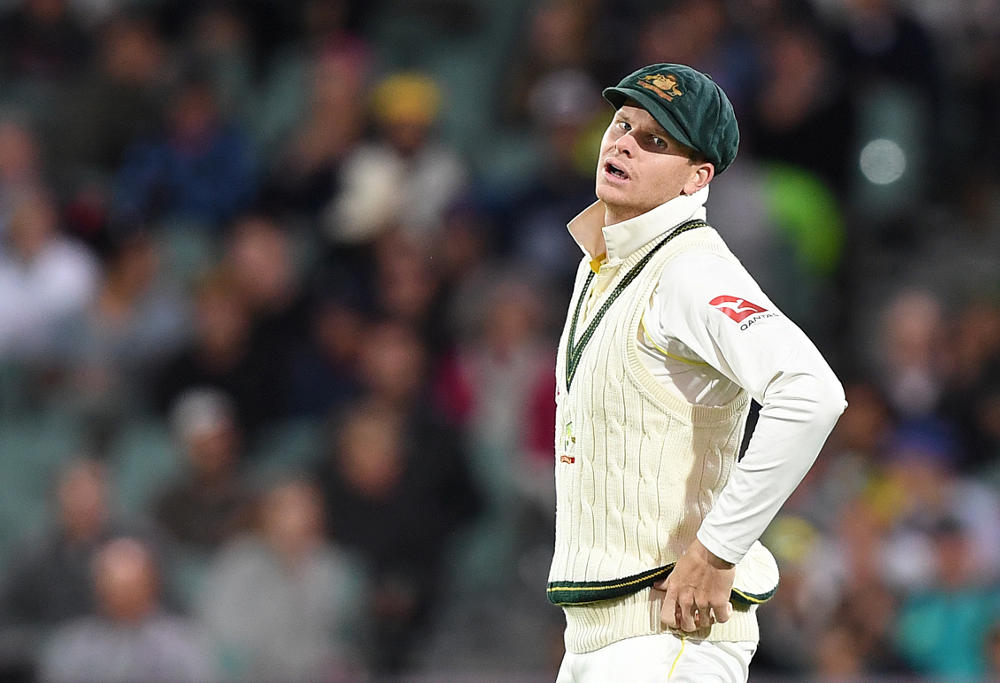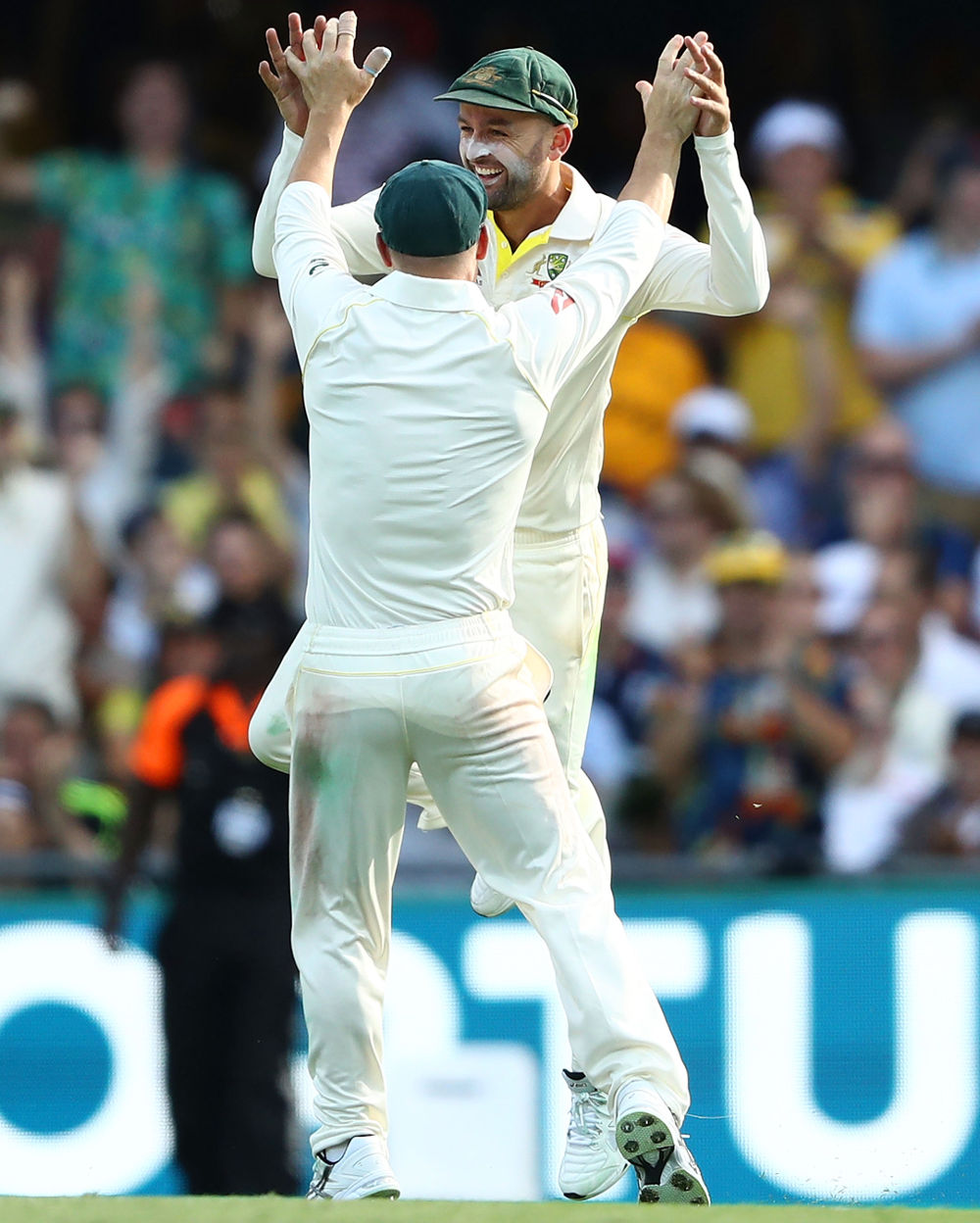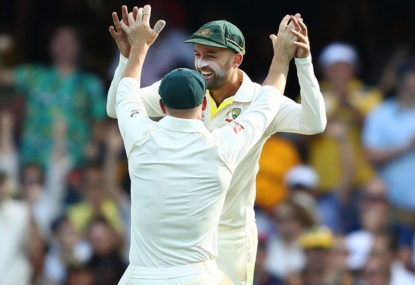Never in doubt, right?
It had every Australian cricket fan fearing the worst after a thrilling Day 4, but in the end, the second Ashes Test was comfortably won by the hosts, who cut through England’s batting order with ease on Day 5.
There was plenty of controversy, great bowling and puzzling captaincy throughout the Test – as well as a superb century from one of the most maligned batsmen in Australia – so there isn’t exactly a shortage of talking points from this match.
1. Steve Smith’s follow-on non-decision
Okay, let’s get this one out of the way early. Smith’s decision to not enforce the follow-on was logically sound. At the time, it was probably the correct one; his attack had just bowled the best part of 80 overs and had been blunted by a pair of tail-enders, and Australia only needed to bat for a day to use the new ball under lights.
Of course, with the perfect vision of hindsight, we can easily say Smith’s decision was a shocker, so much so it almost cost Australia the game.
But everyone would be a perfect captain if they could make their decisions with hindsight’s aid. Smith didn’t deserve to be subject to as much criticism as he was after Day 3, and bowling coach David Saker certainly didn’t help things when he questioned Smith’s choice, essentially, as Jason Gillespie noted, throwing his skipper under the bus.
However, there is one part of the decision which was troubling: Smith didn’t discuss the matter with his bowlers.
Mitchell Starc said as much at the end of Day 3, and it’s a puzzling revelation; why wouldn’t Smith consult his attack before deciding whether they were capable of taking another ten wickets? Surely he wasn’t able to make the most informed decision possible without talking to Starc and the rest of his bowlers.
The logic behind batting again may have been sound, but the process wasn’t. The bowlers are the guys who have to get the wickets again, and they’re the ones who benefit from having an extra innings’ rest. While they obviously aren’t the ones who should make the decision, they at least should have been consulted.
Smith will be thankful his call didn’t come back to bite him – although Joe Root has enjoyed no such luck after opting to field first.

(AAP Image/Dave Hunt)
2. On matters of DRS and umpiring
Speaking of things Smith will be relieved about, the skipper was awfully lucky his wasteful use of the DRS late on Day 4 didn’t cost him and his team.
The first ill-fated review always looked speculative, but it was the one four balls later off the bowling of Josh Hazlewood which was worse. Given the bounce we had already seen in the pitch, and the fact Hazlewood always extracts as much rise as possible from any deck he bowls on, reviewing a ball which hit Dawid Malan above the knee-roll was always going to be thrown in the ‘hopelessly optimistic’ pile.
Maybe Hazlewood made the most convincing case for a review ever heard on a cricket pitch. Maybe Smith thought he owed his big quick one after opting against sending a plumb LBW against Alastair Cook upstairs. Who knows.
What we do know is that, with reviews no longer resetting after 80 overs, Smith needs to be a hell of a lot more accurate with his referrals.
In Smith’s defence, he wasn’t helped by the umpires. There were seven decisions which were overturned on review in Adelaide, plus the aforementioned Cook LBW. Smith had few reasons to trust the accuracy of the decisions made by either umpire, so his profligacy with his referrals is understandable – to a degree.
Regardless, he needs to improve that part of his game.
[latest_videos_strip category=”cricket” name=”Cricket”]
3. All hail the GOAT
Saying ‘Niiiiiice, Garry’ should be a thing of the past. Nathan Lyon’s bowling is now way better than that.
Coming into this series, all the focus was on Australia’s battery of pace bowlers, but Lyon has been the most consistent member of the hosts’ attack.
Lyon has no doubt been aided by the volume of left-handers in England’s line-up, but that should take nothing away from the class of his performances. He can, after all, only bowl to the batsman in front of him.
Lyon’s stranglehold over Moeen Ali – one of England’s better players of spin – has been critical in the first two matches. Ali has the ability to take a game away from the opposition, an ability he has been denied by Australia’s frontline spinner.
Not only has Lyon nullified one of England’s most dangerous middle-order batsmen and taken 11 wickets over the two Tests, but he’s also been a miserly option for Steve Smith to turn to. His economy of 2.3 is the best among Australia’s bowlers, and has allowed the likes of Mitchell Starc and Pat Cummins to bowl more aggressively, to go searching for wickets without needing to worry too much about conceding many runs.
Mitchell Starc might have more scalps this series, but there’s no doubt Lyon has been the better bowler. Few would have predicted the GOAT was the bowler most likely to take home player-of-the-series honours, but if he can keep up his current form, that’s exactly what will happen.

(Photo by Ryan Pierse/Getty Images)
4. Problems? Australia have a few
Unsurprisingly for a team trailing 2-0, England have more selection headaches than their opponents. James Vince has been a walking wicket since the first innings in Brisbane, Moeen Ali hasn’t been good enough with bat or ball, the bowling attack took until the second innings in Adelaide to click, the side urgently needs Ben Stokes to be cleared so he can play in Perth, Alastair Cook hasn’t scored an Ashes century since 2011, Joe R–
I’ll stop.
Australia aren’t exactly devoid of issues themselves, though. Chief among them is the form and technique of Peter Handscomb. Ronan O’Connell wrote on this earlier today, but it bears repeating.
Handscomb is averaging under 21 this series and is coming off a sub-par start to the Sheffield Shield. More importantly, he looked all at sea in Adelaide, his trust in his unorthodox technique completely shot.
Given how easily England’s pacemen were able to target Handscomb, there’s a compelling case to drop the Victorian and bring in his state teammate Glenn Maxwell for Perth. Maxwell is fresh off two impressive scores, the first a monster double-century, the second a well-made 96 at the MCG.
Handscomb is the only batsman who has failed to pass fifty for Australia, and hence the only one in any real danger of being dropped, but there will no doubt be a few concerns over the form of Australia’s opening pair of David Warner and Cameron Bancroft. Both have failed with the willow this series, the obvious exception coming at the Gabba during Australia’s chase.
With Usman Khawaja also only scoring the one fifty so far this series, Australia will want to get more out of their top order in the coming Tests.

(AAP Image/Dave Hunt)
5. The Ashes are as good as over
Adelaide always loomed as England’s best chance to grab a victory this summer. Thanks to some insipid bowling and flaky batting in the first half of this Test, that has now well and truly passed them by.
It’s great news for Australia, but it’s not ideal for those wanting a competitive series; it’s hard to see England getting a result after losing in Adelaide.
The tourists will struggle on the bouncy Perth deck – although the WACA pitch has often had more hype than bounce in recent years – and a loss there will hand the Ashes back to Australia. Their greatest hope for a series result would be emulating New Zealand’s efforts from a couple of years ago and snaring a draw in Perth, then hoping for a pair of wins in Melbourne and Sydney.
It’s unlikely though. Australia have, ultimately, won these two Tests comfortably despite an underperforming top order (who would have thought it would be Shaun Marsh leading the hosts to victory with the willow?) and a new ball pair who haven’t bowled at their best for any stretch of time – although they’ve been close at times.
Some might say it’s way too early to declare the series over, but it’s almost a stone-cold certainty that the Ashes are heading back to Australia.
































































































